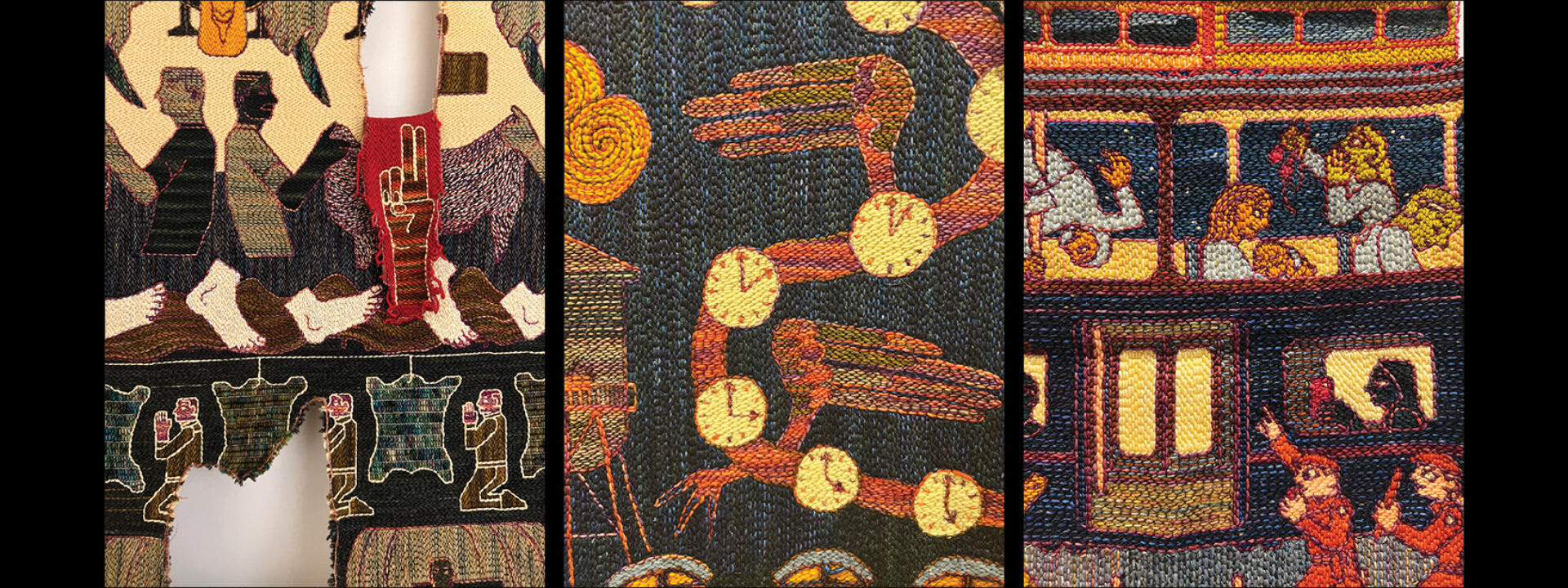Labour’s new stories

Tara Bursey, executive director of the Workers Arts and Heritage Centre, has shifted the non-profit from a place of permanent exhibits to one built around the views of local artists and the community about the present and future of work.
From its start as a hub for Hamilton’s ports of trade in 1860, the Custom House on Stuart Street has alternately served as schools, housing, offices and factories before becoming the home of the Workers Arts and Heritage Centre. In the hands of its new executive director, this heritage site is changing once more to meet the challenges of our uncertain times.
Unlike most changemakers, Tara Bursey approaches her task from a place of long-standing familiarity. She volunteered at WAHC shortly after moving to Hamilton in 2013, using her recent training in curatorial studies at OCAD University to tend to the museum’s collection before transitioning into a permanent role organizing exhibitions and public programs. For the next six years, Bursey would experiment in a space that she describes as “a bit of a laboratory for how art, labour and class can be examined through public programming and presentation.”
Bursey’s artistic priorities have long been shaped by a class consciousness that is informed by her own working-class upbringing in Scarborough. Navigating her chosen worlds of art and higher education did not come naturally. “It takes a lot to push through the messaging you get as a working-class person that you have to do something practical.” At WAHC, she found a surprising cultural space that resonated with her working-class identity.

Even so, Bursey recognized gaps in the stories WAHC told in its permanent displays, which dated to the museum’s founding days in the mid-1990s and told an overwhelmingly singular story of unionized industries that excluded other working realities that are increasingly common today. As a programmer, Bursey carved out space for non-unionized work, precarious gig economies, and even amateur wrestling as equally significant sites of labour.
As executive director, Bursey has dispensed entirely with those permanent displays, and doubts they will ever return. “What is a permanent exhibit when nothing is permanent?” Inspired by exhibition prototyping methods more commonly found in the U.K. and supported by a grant from the Hamilton Community Foundation, Bursey and her colleagues have invited the community to rebuild WAHC’s exhibits by sharing their own experiences of work.
The questions posed throughout the museum’s main floor collect responses from the full spectrum of human labour, both paid and unpaid, with stories gathered through sticky-note comments and coffee bean votes tallied in jars. WAHC embraces the frugal realities of being a non-profit organization in a time of scarcity and crafts its displays from recycled and repurposed materials. Equally motivated by environmental sustainability, these choices also defy the museum’s traditional emphasis on displaying precious, untouchable objects. Here, everything is tactile and transforming.
Even so, fresh perspectives often reveal how much remains the same. Reproductions of pinback buttons from WAHC’s collection have been enlarged as a series of historical labour slogans that visitors can affix to a fence alongside their own stories. As at least one contribution painfully revealed, this interactive display is a reminder of how aspirations like the right to refuse unsafe work remain devastatingly necessary today.

In WAHC’s main gallery, contemporary art charges these conversations with imaginative force, as currently seen in a solo exhibition featuring Tabitha Arnold. Born and recently returned to Chattanooga, Tennessee, Arnold’s work and life are a perfect fit for WAHC’s mandate – an artist and labour activist who produces compelling symbols for protest and recently fought to unionize the coffee shop where she worked at the height of the pandemic. Those slow, lean years also afforded Arnold the time to translate her drawing and painting practice into punch needle embroideries that create intricate new stories of work for today’s world.
Bursey connected with Arnold shortly after her return to WAHC as executive director, excited by the possibilities of “work that combines politics and beauty in a way that is irresistible.” The resulting exhibition opened close to Bursey’s first-year anniversary in her new role. On view until Nov. 25, The People’s Cathedral draws on parables of Christian morality inherited from the artist’s religious upbringing to unravel the dynamics of power, privilege and labour that have long divided societies. Arnold’s tapestries read as medieval artifacts marked by Soviet-era aesthetics that create surreal narratives where gig workers and protestors climb the strata of history into future possibilities.

Arnold’s visit to Hamilton included a short residency that saw the artist facilitate workshops for local community groups, spurring the creation of new work at the local level. WAHC’s next exhibition will invite contemporary artists to respond to its collection of trade union banners, which have been recently digitized and will soon be widely accessible as a virtual exhibition. Reciprocity and creative exchanges such as these are central to how Bursey intends to shape WAHC’s future, particularly at a time when people are talking about toxic labour practices, work-life balance, and the potential of unionization. Ten years after she got her start at WAHC as a volunteer, “the world has come around to us,” she says. Radical changes in work spurred by the pandemic, and the inequalities that have come in its wake, have given these conversations a heightened urgency.
Where locals have become used to seeing the Custom House as “that haunted place,” visitors arriving in Hamilton via the new West Harbour GO Station across the street are passing through WAHC’s newly reconfigured doors in growing numbers, drawn by the same curiosity that brought Bursey here 10 years ago. And freshly motivated by the need for change.

contemporary labour stories.






